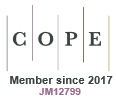
Volume 17 Number 2 2025
What is already known: Evidence suggests that e-cigarettes can increase smoking quit rates. However vaping rates are exceeding smoking in adolescents with active marketing of e-cigarettes to young people leading to some who have never smoked cigarettes taking up vaping. What this study adds: Vaping is more frequent than smoking in young adolescents (aged 14 years and under), with increased rates among girls and Māori, with few indicating that vaping was taken up to help quit smoking. Many young adolescents respond positively when asked if they want help with their vaping. Tight controls of vaping products are needed to prevent e-cigarette marketing from attracting non-smoking adolescents, while ensuring access for those who wish to use vaping to help quit smoking.
HC24128 Abstract | HC24128 Full Text | HC24128PDF (726 KB) | HC24128Supplementary Material (420 KB) Open Access Article
What is known about the topic: For over two decades, New Zealand has aimed to make primary health care more accessible, equitable and efficient, shifting more services into communities. While early efforts lowered patient fees and improved access, ongoing challenges—such as staff shortages and persistent inequities—suggest the system remains underfunded. What this study adds: This study provides the first in-depth look at how New Zealand’s government has funded primary health care in relation to health funding over the past 15 years. Despite increases in dollar terms, funding has not kept pace with population growth, inflation, or overall health spending, raising questions about whether primary care is truly a priority. Our findings call for a stronger financial commitment, recommending routine funding monitoring, a minimum funding benchmark, and a greater share of PHC funding to ensure a fair and resilient system.
HC24155 Abstract | HC24155 Full Text | HC24155PDF (852 KB) Open Access Article
What is already known: General practices that have stopped enrolling any new patients, ie closed their books, increase the barriers to patients in accessing primary health care. In 2024, the authors estimated 36% of general practices in Aotearoa New Zealand had Closed Books, with the Hutt Valley (73%) and Mid Central Health Districts (70%) having the highest percentages. What this study adds: This study looks at the characteristics of people in the areas where general practices are located, ie the user base, to identify which characteristics are associated with a general practice having Open or Closed Books.
HC24177 Abstract | HC24177 Full Text | HC24177PDF (1.4 MB) Open Access Article
HC24110Experience of HPV primary screening: a cross-sectional survey of ‘Let’s test for HPV’ study participants in Aotearoa New Zealand
 , Lynn McBain, Rebecca Bell, Carrie Innes, Sarah Te Whaiti, Alexandria Tino and Peter Sykes
, Lynn McBain, Rebecca Bell, Carrie Innes, Sarah Te Whaiti, Alexandria Tino and Peter Sykes
What is already known: HPV is the major cause of cervical cancer and can be detected from a self-collected vaginal or clinician-collected cervical sample with comparable sensitivity and specificity. HPV self-testing has been shown to be an effective tool to improve participation in cervical screening among never and under-screened people. What this study adds: HPV primary screening incorporating self-testing was widely accepted among screening-eligible primary care participants, but key messages about this new approach were not well understood. Education, information provision and clear communication at all stages of the screening pathway will be critical to support patient understanding of and confidence in HPV primary screening.
HC24110 Abstract | HC24110 Full Text | HC24110PDF (996 KB) | HC24110Supplementary Material (438 KB) Open Access Article
HC24118‘I felt so empowered, respected and shame free.’ Let’s test for HPV participants’ experience of HPV primary screening
 , Lynn McBain, Susan M. Garrett
, Lynn McBain, Susan M. Garrett  , Rebecca Bell, Carrie Innes, Sarah Te Whaiti, Alexandria Tino and Peter Sykes
, Rebecca Bell, Carrie Innes, Sarah Te Whaiti, Alexandria Tino and Peter Sykes
What is already known: Access to human papillomavirus (HPV) self-testing improves participation in cervical screening among people who are un- or under-screened. Primary care clinicians involved in the early implementation of HPV primary screening in Aotearoa New Zealand support the change in primary screening modality. What this study adds: The ability to self-test, clear clinician communication and support were important contributors to a good screening experience, while inadequately communicated information impacted negatively on multiple aspects of screening. Participants identified a range of practical suggestions for primary care providers to support access and acceptability among future screening participants.
HC24118 Abstract | HC24118 Full Text | HC24118PDF (971 KB) | HC24118Supplementary Material (281 KB) Open Access Article
HC24103He mana tō te mātauranga – knowledge is power: a qualitative study of sexual and reproductive healthcare experiences of wāhine Māori
 , Susan Bidwell, Ben Hudson
, Susan Bidwell, Ben Hudson  , Maira Patu, Christina McKerchar
, Maira Patu, Christina McKerchar  and Ibrahim S. Al-Busaidi
and Ibrahim S. Al-Busaidi 
What is already known: Māori experience sexual and reproductive health (SRH) inequities. Healthcare providers (HCPs) and health services have critical roles in facilitating the health literacy of our population, which impacts on SRH. What this study adds: Wāhine Māori (Māori women) want to be well-informed when accessing SRH care and find this empowering, however, their experiences of this are variable and accurate SRH knowledge can be inaccessible. Improved dissemination of SRH knowledge, in the community and by HCPs, is needed.
HC24103 Abstract | HC24103 Full Text | HC24103PDF (768 KB) | HC24103Supplementary Material (205 KB) Open Access Article
HC25037Te hāpai i te mana wāhine, te takahi i te mana wāhine: Māori women’s experiences of empowerment and disempowerment in sexual and reproductive healthcare
 , Susan Bidwell, Ben Hudson
, Susan Bidwell, Ben Hudson  , Maira Patu, Christina McKerchar
, Maira Patu, Christina McKerchar  and Ibrahim S. Al-Busaidi
and Ibrahim S. Al-Busaidi 
What is already known: Patients’ experiences with healthcare services can influence how patients access, trust, utilise, and benefit from care, ultimately affecting health outcomes. Māori experience inequitable sexual and reproductive health outcomes, as well as inequitable access to and delivery of healthcare. What this study adds: Wāhine Māori (Māori women) have variable experiences of sexual healthcare. Healthcare encounters where wāhine are treated with manaakitanga (kindness and respect), and where staff attempt to make connections with wāhine (whakawhanaungatanga) are empowering; however, dehumanising experiences were frequent and impacted trust in and benefit from services.
HC25037 Abstract | HC25037 Full Text | HC25037PDF (754 KB) | HC25037Supplementary Material (1001 KB) Open Access Article
HC24051Towards new forms of communication and surveillance: a mixed methods study of rapid respiratory virus assessment in general practice during the SARS-CoV-2 pandemic
 , Sue Huang, Christine McIntosh, Michelle Balm, Isabella Cheung, Lorraine Castelino
, Sue Huang, Christine McIntosh, Michelle Balm, Isabella Cheung, Lorraine Castelino  and Nikki Turner
and Nikki Turner
What is already known: The introduction of polymerase chain reaction (PCR) has been seen as a rapid and sensitive method for respiratory virus surveillance, and the COVID-19 pandemic highlighted the critical need for rapid diagnosis of SARS-CoV-2 and the importance of using PCR testing for an accurate assessment. What this study adds: This study demonstrated the feasibility and clinical utility of using point-of-care test (POCT) swabbing for immediate rapid antigen test (RAT) and subsequent PCR testing for respiratory viruses in general practices in the middle of managing a viral pandemic.
HC24051 Abstract | HC24051 Full Text | HC24051PDF (818 KB) Open Access Article
HC24061A mixed-methods evaluation of an intervention for enhancing alcohol screening in adults aged 50+ attending primary health care
 , David Newcombe, Gillian White, John McMenamin
, David Newcombe, Gillian White, John McMenamin  , Janie Sheridan, Juma Rahman and Alison Moore
, Janie Sheridan, Juma Rahman and Alison Moore
What is already known: Hazardous alcohol use is increasing substantially in older adults, yet they are less likely than younger adults to be screened for alcohol use and related harms in primary health care. What this study adds: This research demonstrates the acceptability and value in an approach to identifying alcohol-related harm in those aged 50+ that combines the knowledge of primary health care professionals about alcohol-related harm in this cohort and the use of existing electronic health records to automate detection of risk factors.
HC24061 Abstract | HC24061 Full Text | HC24061PDF (1.2 MB) Open Access Article
What is already known: Children with disabilities in New Zealand, despite having access to free dental care, experience barriers that prevent them from receiving adequate oral health services, leading to poorer outcomes compared to their peers without disabilities. What this study adds: This research provides evidence of high caries rates and substantial unmet dental needs among children with disabilities in Auckland and identifies specific systemic and individual-level challenges in service delivery. It advocates for an integrated care approach and enhanced professional training to address these disparities effectively.
HC25054 Abstract | HC25054 Full Text | HC25054PDF (753 KB) Open Access Article
What is already known: Despite being largely preventable, dental caries remains as the leading cause of children’s hospitalisations in New Zealand, particularly affecting Māori and Pasifika populations. What this study adds: This scoping review offers a systematic analysis highlighting its effectiveness in arresting caries with minimal invasiveness, cost-effectiveness, and the potential to promote oral health equity. Silver diamine can play a critical role in New Zealand’s public dental services in achieving better and more equitable outcomes.
HC24134 Abstract | HC24134 Full Text | HC24134PDF (862 KB) | HC24134Supplementary Material (269 KB) Open Access Article
What is already known: Closed Books are a barrier to accessing primary health care enrolment. In June 2022, there were 347 (33%) general practices that had Closed Books with the lower North Island being particularly affected. What this study adds: This study looks at how Closed Books are distributed across Aotearoa New Zealand in 2024 and how this has changed at the general practice level since 2022.
HC24164 Abstract | HC24164 Full Text | HC24164PDF (957 KB) Open Access Article
HC25097 Full Text | HC25097PDF (632 KB) Open Access Article
HC25100 Full Text | HC25100PDF (722 KB) Open Access Article



